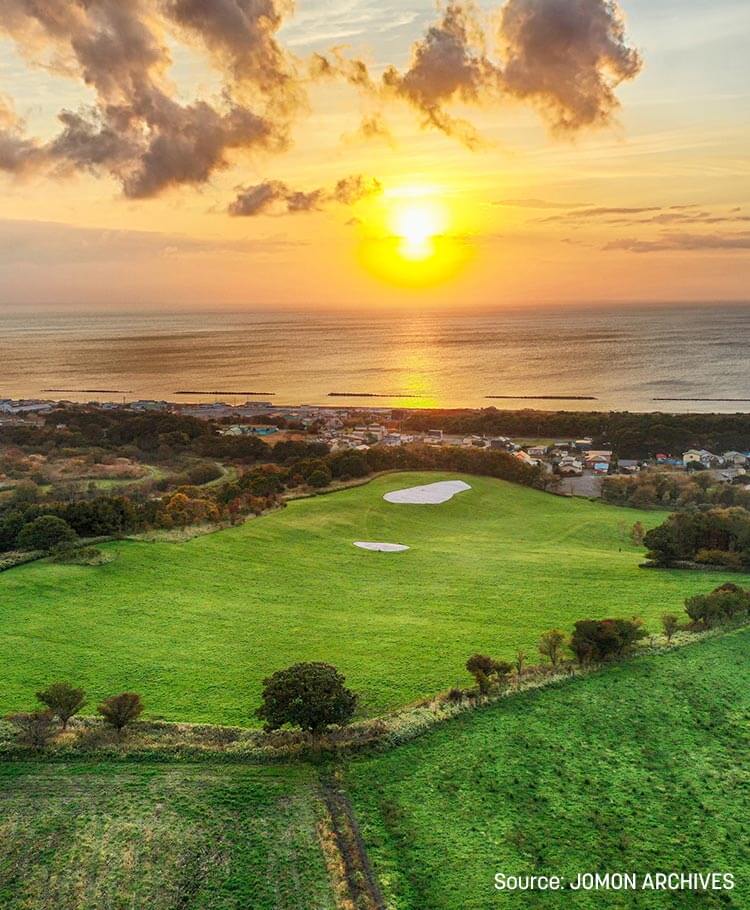Shell Mounds of the Kitakogane Site


Located on a hill overlooking Funka Bay in Date City, this ancient settlement boasts a spectacular view as well as its historical importance. The Kitakogane Site mainly consists of shell mounds and dates back to the early and middle Jomon Period (about 4,500 to 7,000 years ago). In addition to having one of the largest shell mounds in Hokkaido, the site also includes pit dwellings, graves, and the ruins of a watering place, showing the lifestyle and culture of this area developed on fishing. Their lifestyle, especially diet, was very different from that of the Jomon people of Honshu, which probably contributed to the uniqueness that Hokkaido's culture has today. The annual Date Funka Bay Jomon festival, held every August, features various Jomon-related attractions. By experiencing the Jomon culture through a small activity, you are sure to be attracted even more.
Before visiting the Kitakogane Site, you can deepen your knowledge about the Jomon culture at the Chitose Archaeological Operations Center, which exhibits the large mass grave called Kiusu Earthwork Burial Circles and its excavations and artifacts. Also, if you walk from the Kitakogane Site to Toyako Town, you can stop by the Irie Takasago Burial Site, where you can learn about what the lives were like about 4,000 to 5,500 years ago.
See details on this destination
Ofune Site


Located in the Minamikayabe area, about 30 kilometers from the center of Hakodate, the Ofune Site is a large-scale settlement that dates back to the middle Jomon Period (about 4,000 to 5,500 years ago). During the excavations conducted in 1996, the remains of about 100 pit dwellings were found. The dwellings here are distinctively large, and some of them are over two meters deep and ten meters in diameter. The site has restorations of a pit dwelling and an earthen mound in the Jomon-no-Niwa garden, and trees have been planted in the Jomon-no-Mori woods to recreate the lush environment of that time. You can try craft activities too to get a closer look at the Jomon lifestyle and spiritual culture cultivated in this coastal area.
See details on this destination
Kakinoshima Site


Located in the Minamikayabe area in Hakodate City, the Kakinoshima Site is a settlement on a coastal terrace along the Kakinoshima River. It has been open to the general public since the day after it was designated as a World Heritage. This archaeological site showcases the traces of the lives from the early to late Jomon Period (about 3,000 to 9,000 years ago). The over 190-meter long, U-shaped earthen mounds, one of the largest in Japan, and the remains of pit dwellings still look almost unchanged since the Jomon Period. Earthenware, stone tools, shells, and fish bones have been excavated from the mounds, indicating that the place was used for rituals and ceremonies. You can also try experiencing excavation here to explore the Jomon culture even deeper.
See details on this destination
Hakodate Jomon Culture Center

Located adjacent to the Kakinoshima Site, the Hakodate Jomon Culture Center opened in 2011 as a base for disseminating the Jomon culture. The Chuku Dogu, or the hollow clay figurine, is one of the main exhibits of the center and is famous as the only National Treasure of Japan in Hokkaido. This figurine was discovered in 1975 in the former Minamikayabe Town (now called the Minamikayabe area of Hakodate City). "Kakku" is the nickname, but people sometimes call it the "Jomon Venus of the North" for its beautiful facial expression and curvy lines. It is one of the biggest clay figurines in Japan that showcase the characteristics of the late Jomon Period. In addition to the figurine, the center also displays a large number of earthenware and stoneware excavated from Jomon sites in Hakodate. You can enjoy activities like miniature earthenware making and Jomon knitting too.
※In order to prevent the spread of COVID-19, some of the cultural activities are currently not available.


See details on this destination
Jomon Roman Minamikayabe Roadside Station


Located in the Hakodate Jomon Culture Center, the Jomon Roman Minamikayabe is known as Japan's only roadside station with a National Treasure on its grounds. Here you can find local specialties and Jomon-related items. The baked sweets called Monask is a popular Hokkaido souvenir, and here at this roadside station, they have the matcha green tea and gagome kelp flavor in a clay-figurine shape. The crispy crust of monaka and the crunchy texture of rusk are a perfect match, making it a great souvenir to take home with you. The Jomon walnut soft serve with the walnut powder topping is another popular food to try here since walnut is what the Jomon people often ate back in the time.




